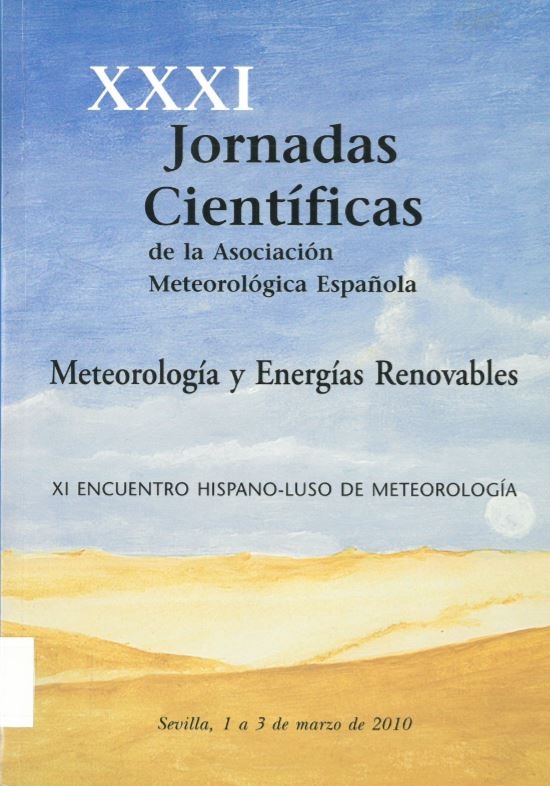Medições de longo termo, in situ à superfície, de propriedades ópticas dos aerossóis em Évora, Portugal
Resumen
The evaluation of the direct effect of aerosols on climate (due to their interaction with solar and terrestrial radiation via scattering and absorption processes) requires quantitative information on their optical properties. Long term measurements at different locations are necessary for characterizing both the aerosol field and climatology in order to decrease the uncertainties in radiative forcing estimations. Spectral scattering coefficients, σsp(λ), are measured at Évora Geophysics Centre’s (CGE) Observatory since 2002, with an Integrating Nephelometer (TSI-3563) at the wavelengths λ = 450, 550 and 700 nm. The Ångstrom exponent, α, which is related to size distribution, was calculated with the wavelengths of 450 and 700 nm:)450log()700log( ))(450log())(700log( − − = − sp sp σσ
α
(eq. 1)
Measurements of absorption coefficient, σap(λ), at 670 nm, were performed since 2007 with a MultiAngle Absorption Photometer (Thermo Scientific, Model 5012). Évora is a small sized city (~60000 inhabitants) located on the south-western sector of the Iberian Peninsula. It’s surrounded by a rural area of low population density. No major polluting industries are present in the area; therefore the local anthropogenic production is essentially related to traffic and biomass burning for heating during the colder fall and winter periods. The aerosol load is frequently of moderate to low magnitude, hence the site is suitable for monitoring long-range transported particles from other regions, namely dust from Sahara and pollution from major industrial/urban areas or due to forest fires (Elias et al., 2006; Pereira et al., 2008).
Citas
Draxler, R.R. and Rolph, G.D., 2003. HYSPLIT (HYbrid Single-Particle Lagrangian Integrated Trajectory) Model access via NOAA ARL READY Website (http://www.arl.noaa.gov/HYSPLIT.php). NOAA Air Resources Laboratory, Silver Spring, MD.
Elias, T., A. M. Silva, N. Belo, S. Pereira, P. Formenti, G. Helas, and F. Wagner (2006), Aerosol extinction in a remote continental region of the Iberian Peninsula during summer, J. Geophys. Res., 111, D14204, doi:10.1029/2005JD006610.
Pereira, S., Wagner, F., and Silva, A. M.: Scattering properties and mass concentration of local and long range transported aerosols over the south western Iberian Peninsula, Atmos. Environ., 42, 7623–7631, 2008.
Rolph, G.D., 2003. Real-time Environmental Applications and Display sYstem (READY) Website(http://www.arl.noaa.gov/ready.php). NOAA Air Resources Laboratory, Silver Spring, MD.

